Date-time hierarchies are hierarchies that contain date-time member elements.
- Click here to learn how to configure Date-Time hierarchies in Model
Date-Time
Commonly, the datasource contains a date-time hierarchy that resembles the image below:
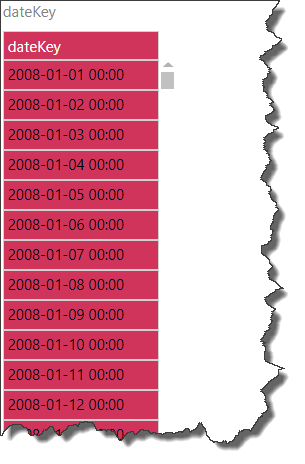
Date-Time Type
To utilize the various functions available for date-time hierarchies, you must ensure that the date-time hierarchy was categorized as Date Time in the Model app, or that it is assigned to the Date Time type from the Properties panel:
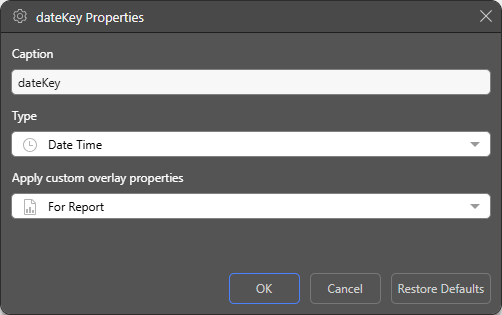
Hierarchies that have been classified as date-time are designated by a clock icon in the hierarchy tree.
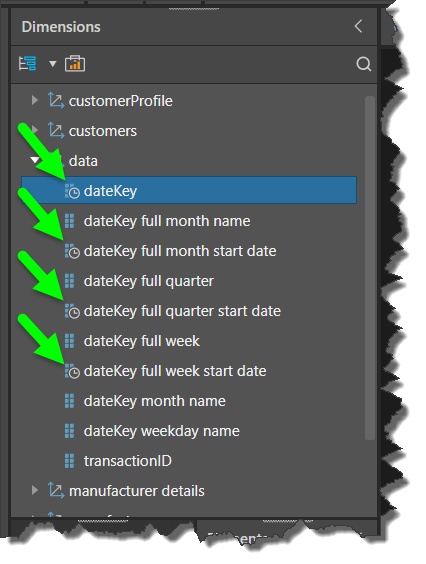
Date-Time Functions
Time Intelligence
If you are working with a data model that was configured in Pyramid, you may also see a number of 'time intelligence' hierarchies, which contain date groupings extracted from the date-time hierarchy. For instance, you may have a hierarchy for months, another for weeks, and another for years. This allows you to add relevant date-time groupings to the query to build visualizations that display, for instance, Sales by Quarter, filtered by Year.
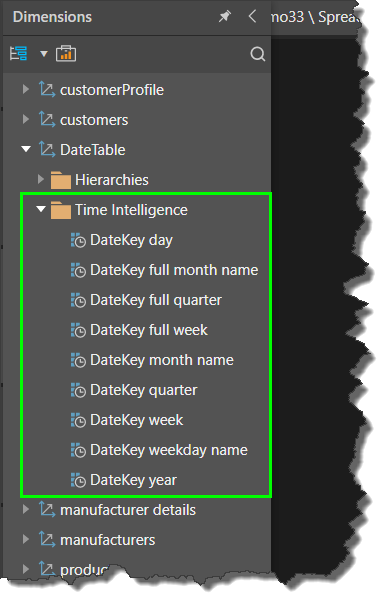
Date Parts
Alternatively, you can extract date-parts from a given date-time hierarchy to create new date-time columns on the fly, without making changes to the date model. This allows you to, for instance, create a column listing all the years contained in the date-time column, a second containing all the months, a third containing all quarters, and so on. This offers a flexible method for performing date-time analysis in a data model that does not contain the required date-time groupings required for such analysis.
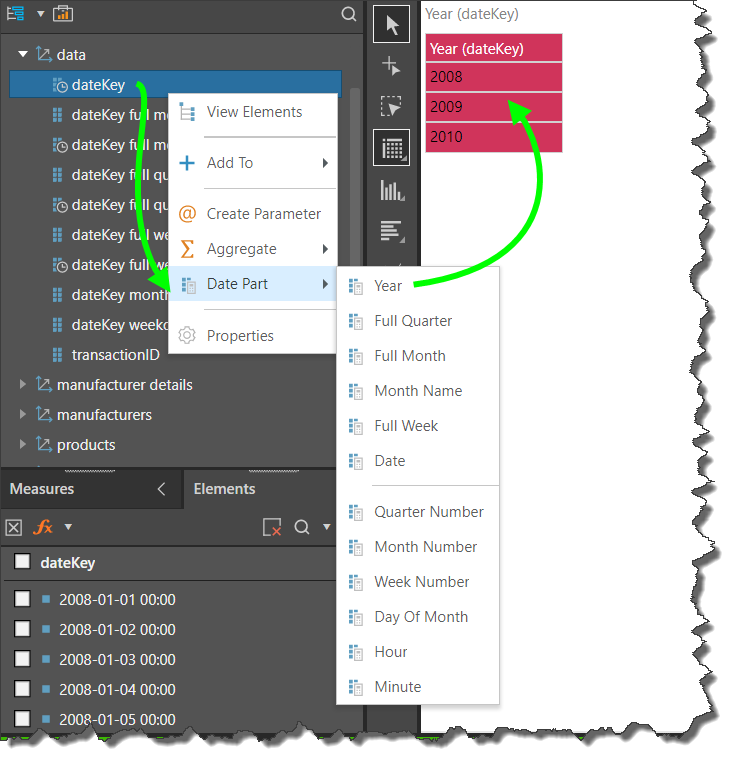
Date Filters
Another option allows you to add a date-time hierarchy to the Filter zone, thereby creating a Calendar Slicer, which is used to filter the query by the required date/time groupings on the fly.

Time Calculation Wizard
A fourth option enables you to create date-time calculations on the fly in the Time Calculation Wizard. This functionality allows you easily generate complex date-time calculations, which can then be saved, shared, and added to the query.
